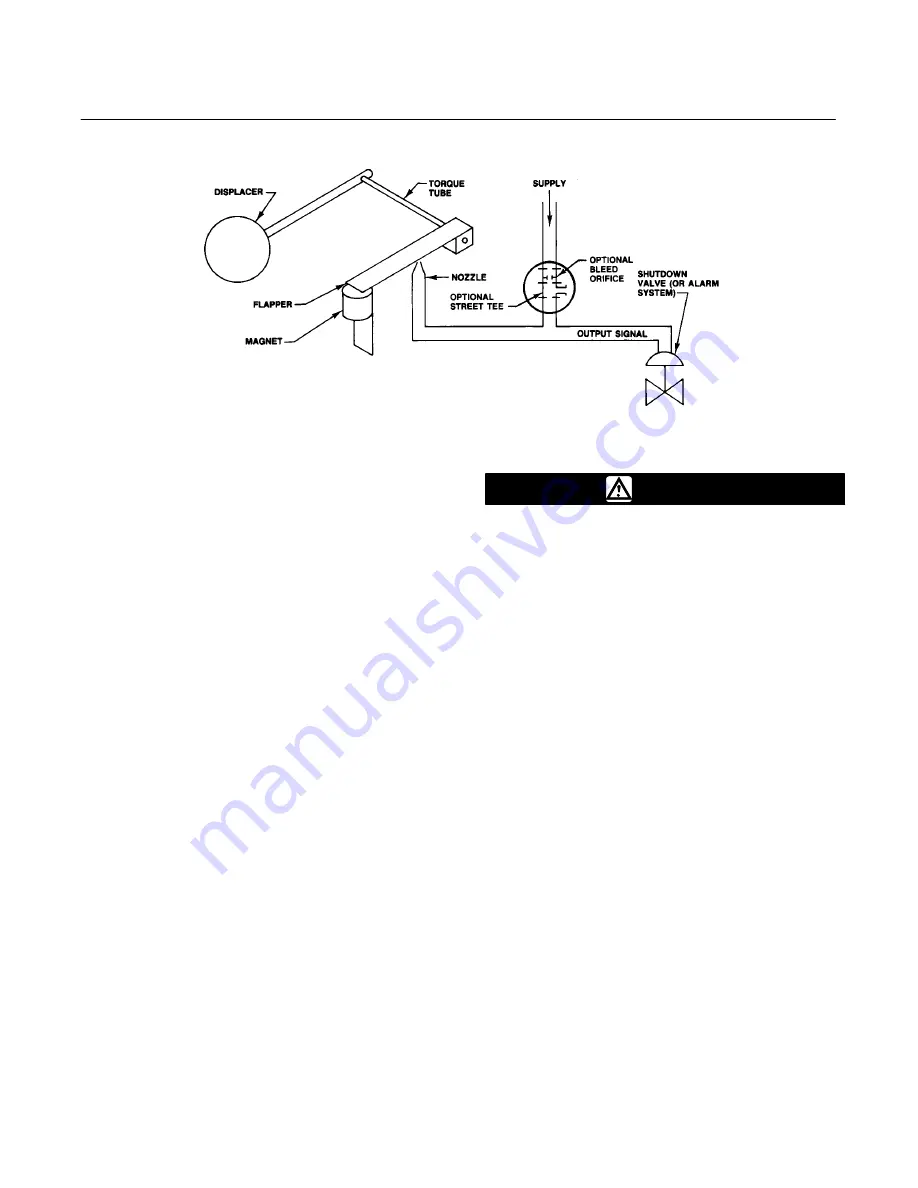
2100 and 2100E Liquid Level Switches
Instruction Manual
Form 5039
December 2005
6
A3619-2/IL
Figure 4. Principle of Operation for High-Level Type 2100 Switch
The reduced pressure in the output signal line
activates the shutdown or alarm system. When the
liquid level lowers, the falling displacer forces the
flapper into the field of the magnet, letting the
magnet snap the flapper against the nozzle and
causing output pressure to build to full supply
pressure.
On applications where low-level switch operation is
required, the nozzle, flapper, and magnet are
positioned on the opposite side of the torque tube so
that downward displacer travel moves the flapper
away from the nozzle.
The Type 2100E switch is an external,
cage-mounted, electric liquid level switch. Rising
liquid level exerts a buoyant force on the torque tube
that either activates or deactivates an electrical
SPDT (single-pole, double-throw) or DPDT
(double-pole, double-throw) switch depending on the
required switching action. Falling liquid level
deactivates or activates the same switch depending
on the required action.
Maintenance
Switch parts are subject to normal wear and must be
inspected and replaced when necessary. The
frequency of inspection and replacement depends
on the severity of service conditions.
Refer to figure 5 for maintenance of the Type 2100
switch and figure 6 for maintenance of the Type
2100E switch.
WARNING
Always wear protective clothing,
gloves, and eyewear when performing
any maintenance procedures to avoid
personal injury.
The displacer is a sealed container
inside the cage. A displacer penetrated
by process fluid may retain pressure
or hazardous fluid for an extended
period. Such a displacer may contain
pressure as a result of being in a
pressurized vessel, or it may contain
fluid that becomes pressurized due to
changes in temperature and/or it may
contain fluid that is hazardous or
flammable. The sudden release of
pressure, contact with hazardous fluid,
fire, or explosion resulting in personal
injury can occur if a displacer that is
retaining pressure or process fluid is
punctured or subjected to heat. Handle
the cage (with displacer inside) with
care in removing, storing, or
disposing, taking into consideration
the characteristics of the process fluid.
To avoid personal injury and damage
to the process system caused by the
sudden release of pressure, contact
with hazardous fluid, fire, or explosion,
isolate and drain the displacer cage.







































